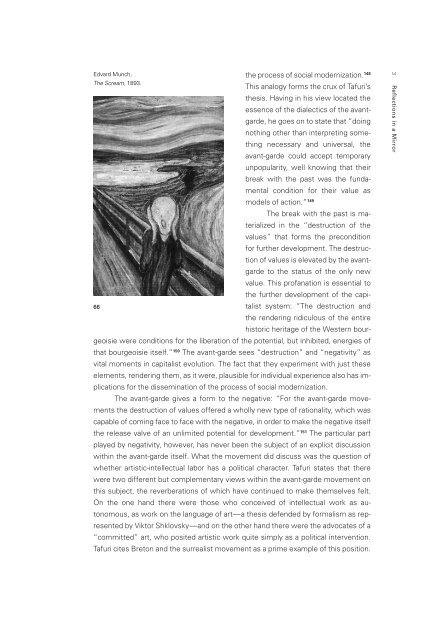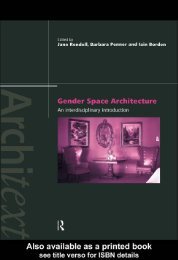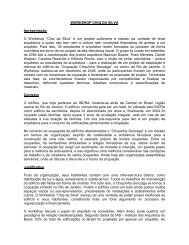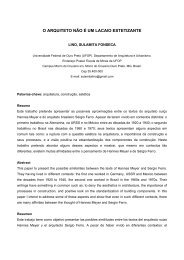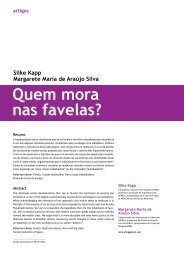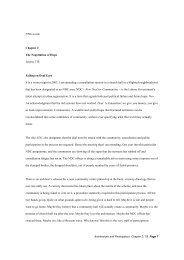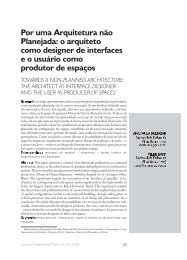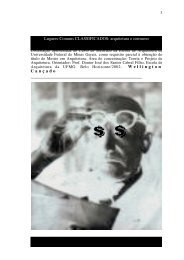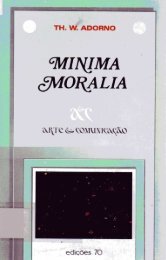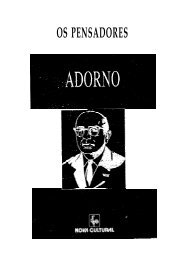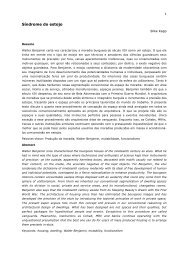Architecture and Modernity : A Critique
Architecture and Modernity : A Critique
Architecture and Modernity : A Critique
Create successful ePaper yourself
Turn your PDF publications into a flip-book with our unique Google optimized e-Paper software.
the process of social modernization. 148<br />
This analogy forms the crux of Tafuri’s<br />
thesis. Having in his view located the<br />
essence of the dialectics of the avantgarde,<br />
he goes on to state that “doing<br />
nothing other than interpreting something<br />
necessary <strong>and</strong> universal, the<br />
avant-garde could accept temporary<br />
unpopularity, well knowing that their<br />
break with the past was the fundamental<br />
condition for their value as<br />
models of action.” 149<br />
The break with the past is materialized<br />
in the “destruction of the<br />
values” that forms the precondition<br />
for further development. The destruction<br />
of values is elevated by the avantgarde<br />
to the status of the only new<br />
value. This profanation is essential to<br />
the further development of the capitalist<br />
system: “The destruction <strong>and</strong><br />
the rendering ridiculous of the entire<br />
historic heritage of the Western bourgeoisie<br />
were conditions for the liberation of the potential, but inhibited, energies of<br />
that bourgeoisie itself.” 150 The avant-garde sees “destruction” <strong>and</strong> “negativity” as<br />
vital moments in capitalist evolution. The fact that they experiment with just these<br />
elements, rendering them, as it were, plausible for individual experience also has implications<br />
for the dissemination of the process of social modernization.<br />
The avant-garde gives a form to the negative: “For the avant-garde movements<br />
the destruction of values offered a wholly new type of rationality, which was<br />
capable of coming face to face with the negative, in order to make the negative itself<br />
the release valve of an unlimited potential for development.” 151 Edvard Munch,<br />
The Scream, 1893.<br />
66<br />
The particular part<br />
played by negativity, however, has never been the subject of an explicit discussion<br />
within the avant-garde itself. What the movement did discuss was the question of<br />
whether artistic-intellectual labor has a political character. Tafuri states that there<br />
were two different but complementary views within the avant-garde movement on<br />
this subject, the reverberations of which have continued to make themselves felt.<br />
On the one h<strong>and</strong> there were those who conceived of intellectual work as autonomous,<br />
as work on the language of art—a thesis defended by formalism as represented<br />
by Viktor Shklovsky—<strong>and</strong> on the other h<strong>and</strong> there were the advocates of a<br />
“committed” art, who posited artistic work quite simply as a political intervention.<br />
Tafuri cites Breton <strong>and</strong> the surrealist movement as a prime example of this position.<br />
3 Reflections in a Mirror


